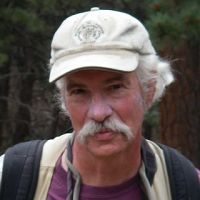Leopold et al., 2008
Using geophysical methods to study the shallow subsurface of a sensitive alpine environment, Niwot Ridge, Colorado Front Range, USA:
Leopold, M., Dethier, D., Voelkel, J., Raab, T., Corson-Rickert, T., and Caine, N. (2008)
Arctic, Antarctic and Alpine Research 40(3): 519-530.
-
Boulder, INVESTIGATOR
-
Boulder, INVESTIGATOR
-
Boulder, INVESTIGATOR
-
Boulder, INVESTIGATOR
Abstract
Shallow seismic refraction (SSR) and ground penetrating radar (GPR) are non-invasive geophysical techniques that enhance studies of the shallow subsurface deposits which control many geomorphic and biogeochemical processes. These techniques permit measuring the thickness and material properties of these deposits in sensitive alpine areas without using extensive pits and trenches that can impact current biogeospheric processes or distort them for future research. Application of GPR and SSR along 1.5 km of geophysical lines shows that layers of fine to coarse, blocky deposits of periglacial origin underlie alpine slopes in the vicinity of Niwot Ridge, Colorado Front Range. Interpretation of geophysical and drilling data shows that depth to bedrock ranges from 4 to >10 m and is not simply related to local slope. Our measurements suggest that ice lenses form seasonally beneath solifluction lobes; ice was not present in adjacent areas. Ice lenses are associated with local ponded water and saturated sediments that result from topographic focusing and low-permeability layers beneath active periglacial features. Geophysical interpretations are mainly consistent with data derived from nearby drill cores and corroborate the utility of GPR in combination with SSR for collecting subsurface data required by different landscape models in sensitive alpine environments.
Citation
Leopold, M., Dethier, D., Voelkel, J., Raab, T., Corson-Rickert, T., and Caine, N. (2008): Using geophysical methods to study the shallow subsurface of a sensitive alpine environment, Niwot Ridge, Colorado Front Range, USA:. Arctic, Antarctic and Alpine Research 40(3): 519-530.. DOI: 10.1657/1523-0430(06-124)[LEOPOLD]2.0.CO;2
 This Paper/Book acknowledges NSF CZO grant support.
This Paper/Book acknowledges NSF CZO grant support.
Explore Further




